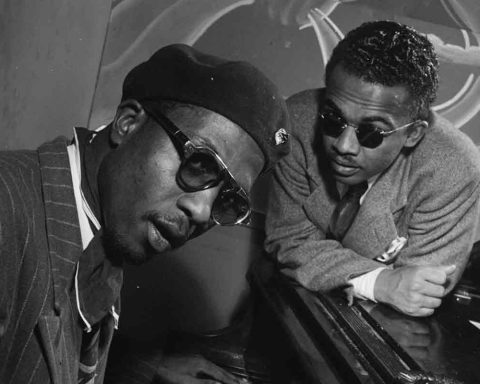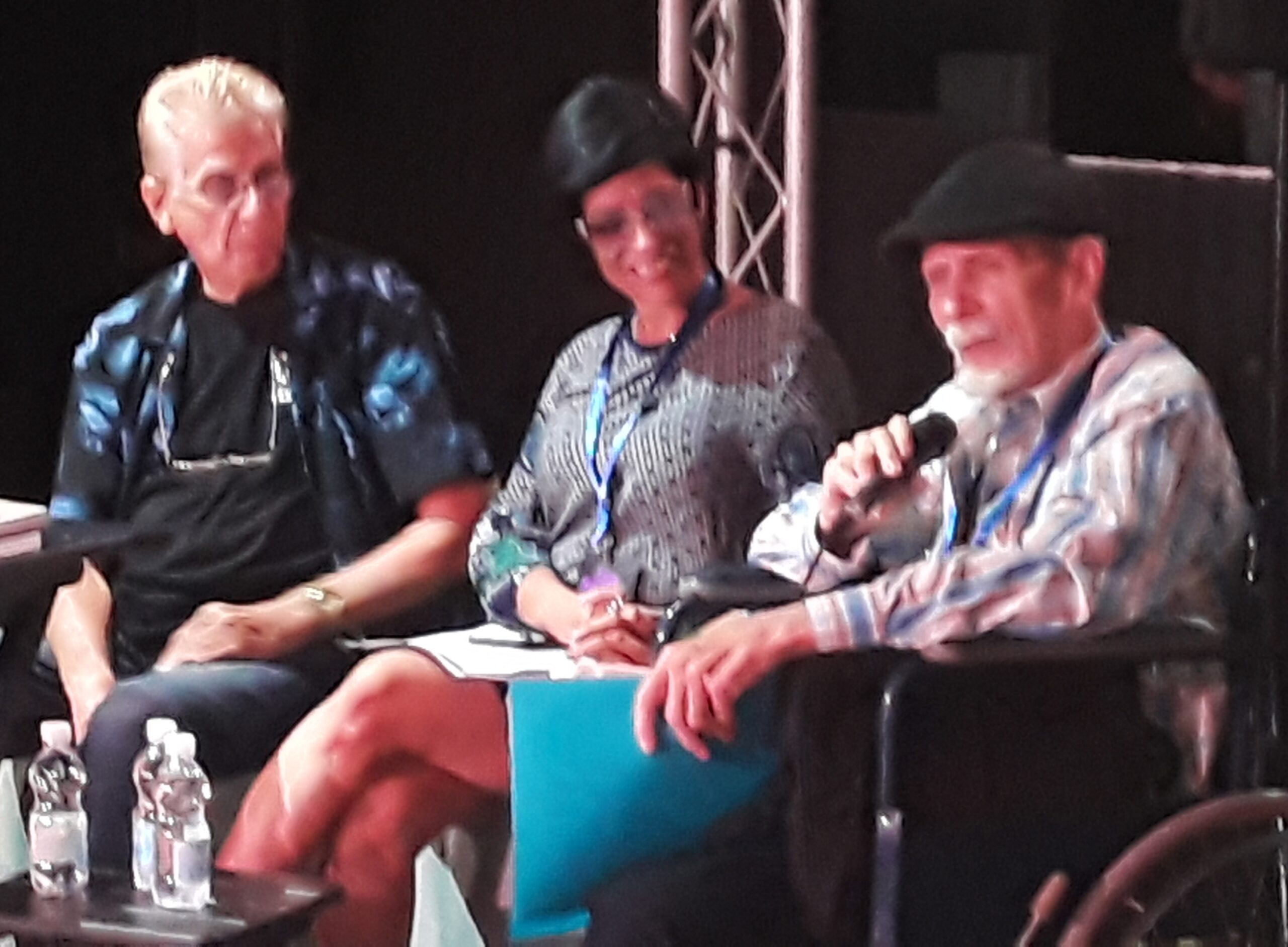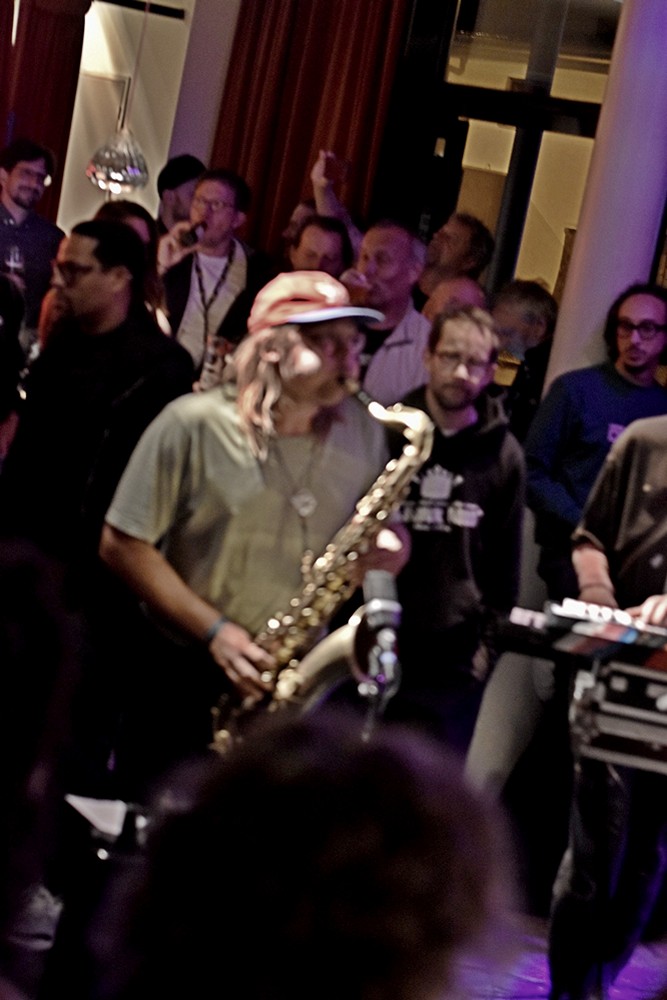Frozen Music, radio and TV editor, writer and photographer Davor Hrvoj’s fifth book on jazz, sees the light as the fifth release in the Jazz Beat book series.
As series editor Karlo Ilić stated during the book release event in Zagreb, Croatia last December, it is “dedicated to a written incorporation of jazz music. . . and represents a singular, truly matchless aspect of Hrvoj’s work: his conversations with jazz musicians”.
Hrvoj’s endeavor, starting with his Jazz Reflections book in 2001, is one of these outstanding projects in South Slavic languages, comprising interviews and original portraits of great contemporary musicians. It’s on the shelf with distinguished photo books of renowned Žiga Koritnik from Lubiana, a jazz-structured novel The Dog & the Doublebass by Saša Ilić (unrelated) from Belgrade, or Free Jazz Communism, a theoretical treatise about Archie Shepp’s activism and political thought edited by Kosovar theoretician Sezgin Boynik. Thus the Jazz Beat series makes a lasting jazz impression in the region of former Yugoslavia once known as a bridge among the West and the Third World.
The Jazz Beat book series is published by Ex Libris, an antiquarian and used books store based in Rijeka. It took off few years ago with Jazz Beat, an anthology of beat poetry edited and translated by Vojo Šindolić, renowned for his editing from 1976 – 79 of Dzuboks (Juke Box), the first Yugoslav rock magazine. Also in the Jazz Beat catalog: Invisible Man, African-American writer and musician Ralph Ellison’s post-WWII high modernism novel; Yusef Lateef’s Autophysiopsychic Writings, the first release of short prose and drama in a foreign language by the famous saxophonist, composer, educator and world-music pioneer; the controversial autobiography of Charles Mingus, Beneath the Underdog (co-authored by Nat Hentoff), put forth in his centennial year.
The Jazz Beat series has found an eager audience among many local enthusiasts and experts — Šindolić, for instance, who is also a translator of Haruki Murakami, the best-selling Japanese author who was a jazz-kisa manager before he dedicated himself to writing that explores and exemplifies the influence of American cultural imperialism on Japanese intellectual and artistic life. There’s also Saša Nestorović, a Croatian post-Coltrane saxophone player who wrote the foreword to Hrvoj’s Frozen Music.
This synergy isn’t surprising, since jazz will always connect people from across artistic spheres. After all, jazz as an essential force of its own amazed European Dadaists and Surrealists more than a hundred years ago. They appreciated an art form that didn’t come from the traditional heritage they themselves disapproved of, being avant-garde (they appreciated film for the same reasons). Today’s jazz has gained some elite privileges by tucking its shirt into its pants, providing its primers with an academic pedigree and becoming an aspect of middle-class representation. The paradox is that jazz avant-gardists have always been respectful of traditions — traditions knit to ethnic backgrounds and a lineage of neglected African-American and Caribbean American classical musicians going back as far as the 18th century.
The opportunity to delve into such complicated but compelling cultural history in the Croatian language today is due to the efforts of editor Ilić, a book salesman and musician. It is significant that Invisible Man, published in America in 1952, born almost equally of the Harlem Renaissance and the Civil Rights movement, was his series’ second release.
Hrvoj’s skills, in contrast, have been known for a few decades to readership of Rijeka’s daily newspaper Novi list (New Standard) as well as to TV viewers. Always outspoken in his verbal expression, well prepared and informed, in Frozen Music he covers at least four decades of recent jazz based on his pilgrimages to European festivals and venues.
His connoisseurship emphasizes American and African-American music in favor of European jazz; indeed, his geopolitical perspective is U.S.-centric, if from a multikulti angle. The speakers in this reading compliment each other, as the cool guys from American movies do. The author himself ends up in an unusual situation as his interviewees treat him as a respected veteran and a regional celebrity. The perspective gives the reader a sense of grandeur, as when during an in-depth interview with Famoudou Don Moyé the German-American pianist Joachim Kühn speaks about voodoo and trance, or in a discussion with Tom Harrell, Hrvoj hangs on every breath the trumpet takes to answer his questions.
Hrvoj approaches his interviewees with an air of mystical awe. Chapter titles such as “The Quest for the Key That Opens the Space of Beauty” (about Chris Potter), “Secret Harmonies” (Ralph Towner) and the title essay “Frozen Music” (concerning Aruan Ortiz), speak to this.
The blurbs on the book sleeves come from Paul Motian, who claims he’d wish to write a tune for Hrvoj, and Herbie Hancock, who insisted after their conversation that it must be published. In his concluding statement, saxophonist Nestorović asserts that these in-depth interviews allow us to become intimate friends with the makers of this unique art of the moment. And also, that Hrvoj’s holistic approach is a unique phenomenon in music journalism. Frozen Music is the thing.
This article is modified from its original publication in December by glazba hr.






